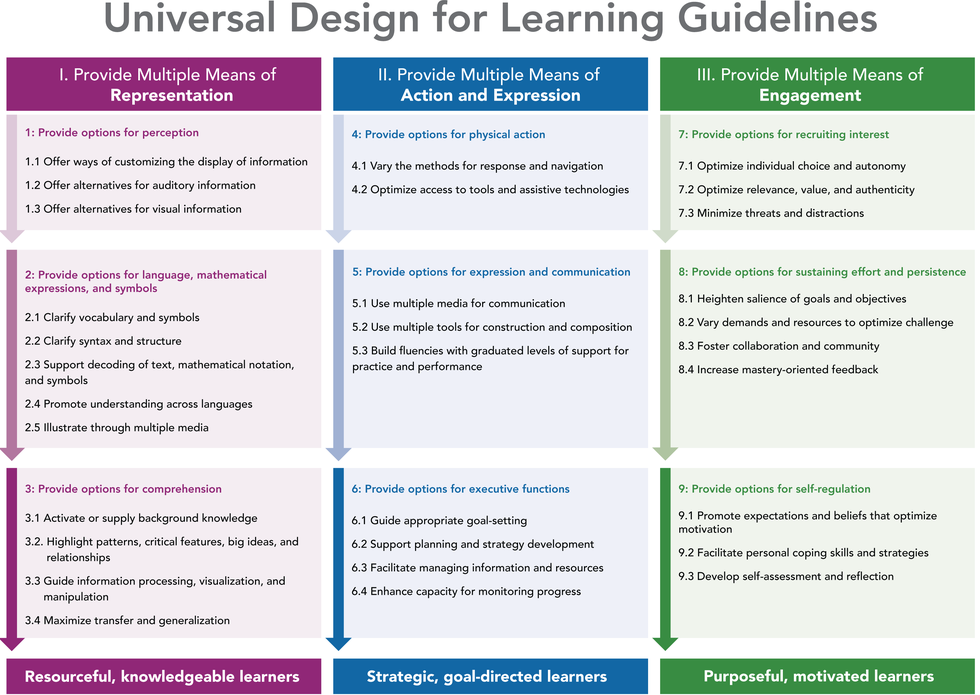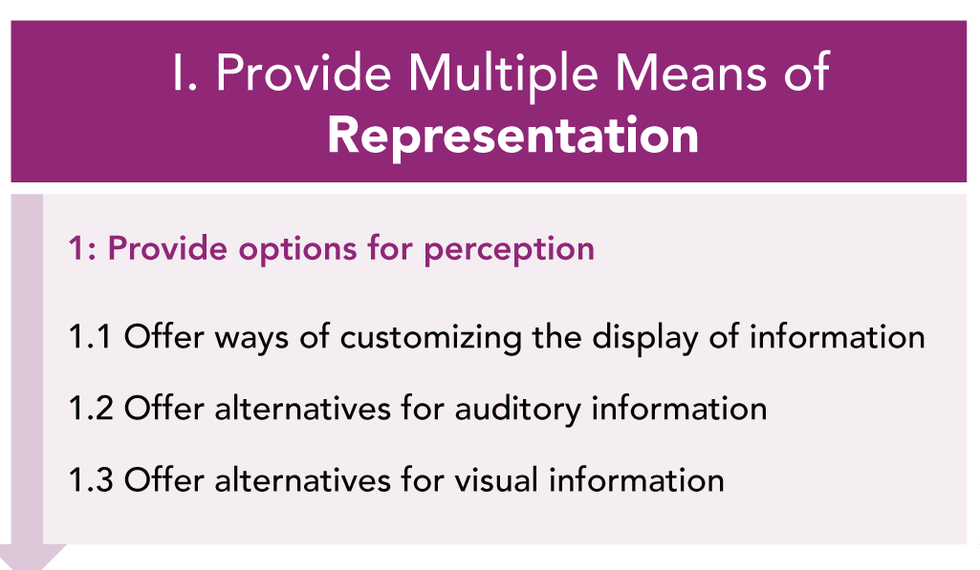Let's take a deeper dive into Universal Design for Learning and deconstructing it! Starting with the base knowledge that Universal Design for Learning (UDL) is a framework for designing and delivering instruction based on the three networks of the brain, we can now begin to dissect it by principle and guideline.
Brief Review: The three networks of the brain associated with learning are:
1. The Recognition Network
2. The Strategic Network
3. The Affective Network
The framework of UDL is comprised of three principles based on the networks of the brain associated with learning: representation or the what of learning, action and expression or the how of learning and engagement or the why of learning (CAST 2012). There are nine subsequent guidelines containing check points (diagram below) organized around the three principles of UDL: (I) Provide multiple means of representation; (II) provide multiple means of action and expression; and (III) provide multiple means of engagement” (Rose & Meyer, 2002).
As you can observe from the diagram above, the UDL framework is comprised of three principles: multiple means of representation, multiple means of action and expression and multiple means of engagement. Each principle contains within it three guidelines. We are going to put the principle of representation and the first guideline, options for perception under the magnifying glass.
The principle of multiple means of representation means more that just giving students "examples of the lesson topic in a lot of different ways (Lord Nelson, 2014, p. 61). Lord Nelson (2014) explains that it is "really about providing students different experiences to receive the information (p. 61). Those experiences in turn provide students with deeper levels on understanding and comprehension.
Now let's zero in on options for perception.
There is no "one size fits all" in running shoes, ice cream flavors or television stations! So why should there be a "one size fits all" learning experience for students? Fair isn't everybody getting the same thing the same way. Fair is everybody getting what they need to be successful!
CAST, Inc. (2012) Retrieved from: http://www.udlcenter.org/aboutudl/whatisudl
Meyer, A., Rose, H. D., Gordon, D. (2014). Universal design for learning, theory and practice. Wakefield, MA: CAST Professional Publishing.
Lord Nelson, Loui. (2014) Design and Deliver: Planning and Teaching Using Universal Design for Learning. Baltimore, MD: Brookes Publishing.
Novak, Katie. (2014)) UDL Now. Wakefield, MA: CAST Publishing.























